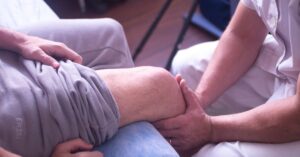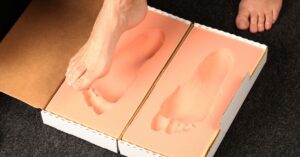Have you ever woken up with a lot of back or neck discomfort? In today’s society, back and neck pain are prevalent concerns. Poor posture, such as staring at your phone for an extended period or bending over a workbench all day, is a common source of these symptoms. However, the sort of pain you experience is mainly due to three common reasons:
Discs

Discs are the gel-like cushions between the vertebrae that are often the source of back or neck pain (bones in the spine). They let your back stretch and bend while maintaining the natural curve of your spine. Most essential, while you walk or run, discs absorb trauma.
A herniated disc occurs when it ruptures, releasing its jelly-like core and aggravating adjacent nerves. While herniated discs are the most prevalent cause of back pain in younger individuals, they are also a significant source of discomfort in older patients. The discs dry up and become less spongy and malleable as you get older. “They stiffen, increasing your chances of a herniated disc.”
Spinal stenosis
A pathological narrowing of the bone canal containing the spinal nerves or spinal cord is spinal stenosis. Unlike many other spinal conditions, spinal stenosis develops gradually and worsens with time, with the pain becoming more frequent and robust.
In most cases, mild exercise and activity modifications treat spinal stenosis. If you suffer from spinal stenosis, you may be able to relieve your symptoms by sitting or lying down, keeping a flexed forward position, or avoiding specific activities that exacerbate the symptoms of spinal stenosis. Spinal epidural injections may relieve pain and discomfort in extreme circumstances.
Arthritis
Another common cause of back or neck discomfort is osteoarthritis, a “wear-and-tear” kind of arthritis. Cartilage, a flexible, elastic tissue, lines the joints that connect the vertebrae. The cartilage in your joints deteriorates as you get older. The discs lose water and become narrower simultaneously, putting extra pressure on the joints. Inflammation can result from this pressure, resulting in back discomfort.
Cervical spondylosis is spinal stenosis that affects the neck (arthritis). Cervical spondylosis occurs when the bones and cartilage in the neck experience abnormal wear.
Prevention
Poor posture and age-related wear and tear are the most common causes of neck discomfort. Keep your head balanced above your spine to avoid neck strain. Modifying everyday activities may be helpful. Consider attempting:
- Maintain a decent posture. Make sure your ears are directly above your shoulders whether you’re standing or sitting.
- Take breaks. Whenever you travel long distances or spend long hours using a computer, get up and move around.
- Set up your desk, chair, and computer so that the monitor is at eye level. Knees should be a fraction of an inch lower than hips. Make use of the armrests on your chair.
- It is a bad idea to tuck your phone between your ear and shoulder when you are talking. Instead, use a headset or speakerphone.
- Make sure you’re sleeping in a comfortable posture. Your head and neck position should be in line with the rest of your body.
Important information regarding back and neck discomfort
Around and neck pain can range from modest to severe, incapacitating discomfort.
- The cause of your discomfort is frequently unknown.
- Symptoms such as numbness, tingling, severe pain that does not improve with medicine and rest, difficulty urinating, weakness, discomfort, numbness in your legs, fever, unintended weight loss, or pain after a fall, see a healthcare provider practitioner.
- Back and neck discomfort frequently improves with time. Consult a doctor if the pain persists.
- To stay healthy and injury-free, use preventative techniques.
- Consider a personalized rehabilitation program if you have severe, crippling, or persistent back pain.




